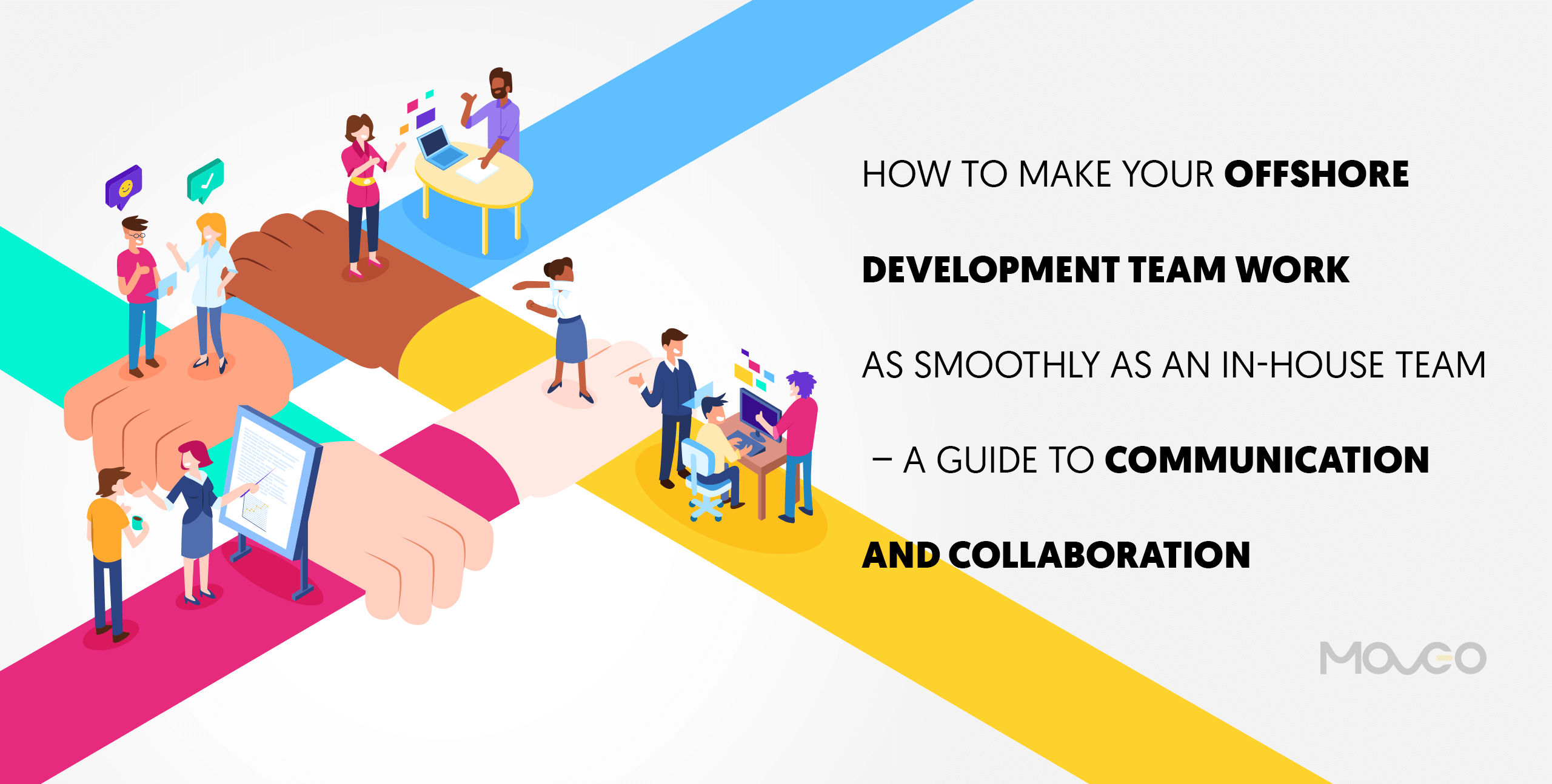“The IT-application outsourcing market is expected to amount to approximately 96.7 billion U.S. Dollars by 2021” –Source: Statista
The many benefits of engaging an offshore development team are often accompanied by concerns around communication and collaboration.
Different time zones, languages, and cultures often make up the chunk of worries that you as a business owner might expect to face.
However, with a few protocols and best practices in place, you can swiftly get past these differences and work with your offshore team just as conveniently as you would with an in-house team.
Effective communication is a key element in the team dynamic. More so when we are dealing with matters such as software development. Discourses over technology, design, and development are complex by their very nature.
For example, you as a business owner have a thorough understanding of the business process. You know the business goals that the app needs to fulfill.
We, your development team, know the ins and outs of technology – the programming languages, frameworks, platforms, and everything in between. We can write a highly sophisticated code that gives you a beautiful and functional app.
But to build an app that brings true business value to you, we need to understand your business domain in exhaustive detail.
Therefore, it is pivotal that you and your team communicate and exchange ideas efficiently.
Technical prowess is seldom a limitation. Most often, the bottleneck of app development lies in communication and implementation of business goals, most of which boils down to communication.
Having worked with hundreds of clients from across the world for over a decade, I would today like to share everything my team and I have learnt about communication and collaboration.
1. Assign a Product Owner
Whether you follow Agile development or not, it is highly recommended that you nominate a Product Owner (PO) from your side. The PO becomes the single point of contact between you and the offshore development team.
This is the person who serves to communicate the vision, ethics and business goals of your company so that the development team can truly align with your brand. Everything we need to know about your customers and what the app needs to do for them comes from the PO.
Having a single dedicated PO ensures that such communication is seamless and consistent.
2. Embrace Asynchronous Communication
Communication may fall into two categories:
Synchronous: Direct, instant communication, such as a phone call, Zoom or Skype video calling
Asynchronous: Typically means communication that is not instant. Email and chat are key examples.
Communicating across different locations and time zones is usually more effective using asynchronous communication.
When you use modes such as chat, not only do you and the dev team have sufficient time to articulate the best response, but you also create a traceable record of every communication, leaving no room for confusion and missed details.
3. Schedule Time for Phone Calls, Video Sessions, Facetime Etc.
Embracing asynchronous does not mean that their needs be no synchronous communication.
You must schedule a time for phone calls and video sessions where you talk to your development team in a more one-to-one fashion, as that always makes for closer interaction, fostering a better team dynamic and a more organic end product.
The crucial element here is to find a scheduled time that works for both you and the development team.
Find an overlap in your time zones when all of you are online for a live chat or a conference call. If there is no overlap, schedule a time that works for both of you and inform every concerned member about that time with adequate heads up.
Either way, you work this out, do ensure that you spend some time interacting live with your team, even if it is just once a week.
4. Use the Right Tools
Synchronous or asynchronous, choosing the right tools for communication goes a long way in keeping things streamlined.
JIRA, Asana, Basecamp, Slack, there are plenty of tools to help you exchange ideas, communicate requirements, and organize files and information.
While a project may require you to use more than one tool, it is advisable for your own sanity to use as few as possible.
Slack for shooting off quick ideas and general conversation, and Basecamp for organizing files, screenshots, etc. could work.
If you start communicating over multiple channels, however, your chats might become too fragmented and hard to keep track of.
5. Be Absolutely Clear About Expectations and Requirements
When your communication is heavily reliant on technology and spanning across cultures and time zones, it is possible for a few things to get lost in translation.
That’s why it is pivotal to the success of your project that both parties clearly understand each other.
You need to communicate your requirement very efficiently and make sure your team understands each part of it.
To do this, begin by clearly documenting every single requirement.
Then, you could ask the development team to re-document these requirements in their words. This will help you establish that they get you.
To double-check everything and ensure complete co-understanding, you could as for a low-fidelity prototype early on. This will help make sure that they fully understand the end product and the development is moving in the right direction.
6. Define Clear Deadlines
To ensure timely delivery of the final product, it helps to be transparent about deadlines. You could chart out a detailed contract that breaks down the development cycle into stages, with clear deadlines for each deliverable.
For instance, you can ask for a sketch/wireframe in a week, a prototype in a month, the homepage in two months, and so on.
Setting clear expectations from the start and documenting them will help prevent miscommunication and unpleasant conversations through the development cycle.
7. Build a Relationship
Instead of establishing a hired-development-team dynamic, go a step further, and build a relationship with your offshore team.
It could be as simple as starting off with a get-to-know-you session or just attempt to remember the names of your team members.
Making your developers, designers and other offshore team members feel like they are an extension of your in-house staff and important members of your company, at least for the duration of the project, results in them being more personally involved in the success of your app. Morale is quite simply a strong motivator.
When they feel like an important part of your mission, they would be happy to stretch their workday to Facetime you for an update. Your relationship with the team keeps the flow of the development cycle stay smooth and amicable.
Wrapping Up
Partnering with an offshore development team can be one of the best moves you make for your business. The cost savings are significant and if you hire well, there’s a quality and service guarantee.
While in-house app development teams are certainly easier to communicate with, they could become an expensive liability once the development is complete.
The best route to go is getting yourself an offshore app development partner with whom you can communicate effectively. To that end, this blog post should have given you everything you need to know.
Setting up clear expectations and frequent interactive sessions with your team can go a long way in homogenizing the process and managing your remote teams as smoothly as you would an in-house team.
Looking for an offshore development partner?
Moveoapps has worked with business partners across the USA, Europe, Oceania and everywhere in between. Contact us to see how we can build your app just like a handpicked team.










